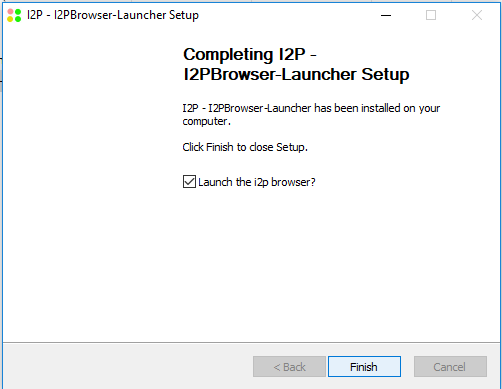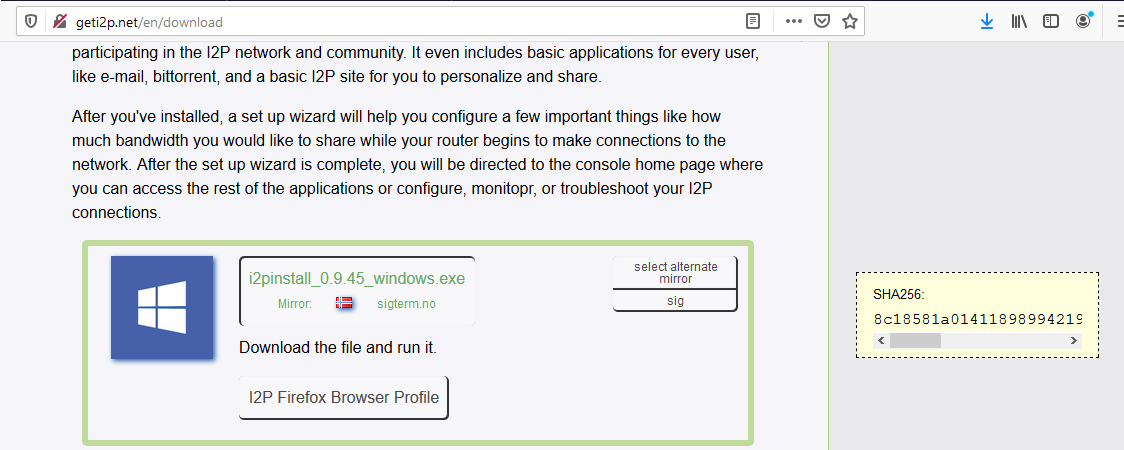Installing I2P, its dependencies, and recommended external software on Windows 10
Getting I2P installed and configured on Windows has at times been a process which left many of our potential participants confused. As power-users and developers, this issue is sometimes invisible to us. So to get a better impression of what the experience is for a new I2P participant, I installed an unfamiliar OS on an old laptop and undertook the install process, from start to finish.
This is deliberately the most detailed version of this guide I could justify as in-scope, some steps might be redundant on computers that have already been in use for some time.
What? An unfamiliar OS? How is that useful?
Relax, it’s Windows.
So what are we going to do here?
We’re going to finish four tasks. We are going to:
- Install Java
- Install I2P
- Install a Real Browser(Firefox)
- Configure I2P Bandwidth
Part One: Install Java
In order to use I2P, you will need a suitable Java environment. On Windows, users should probably choose Oracle’s Java 8 implementation. Please install it by following the instructions below:
If you already have Java installed, you may Skip This Step
- I2P requires Java to run, if you don’t have Java installed, you will get an error that looks like this:
- We appreciate that you have a wide range of choices in Java software, but the Oracle Java software is the easiest to install and use with I2P on Windows. Please use this version.
- Download it from here:
- Double-click the Java Installer you just downloaded. Don’t set a custom path, just use the default one.
- Java will show you some information about what it is and where it runs while you wait for it to finish installing.
- When you see this, Java is almost installed.
- Java is now installed!
Part Two: Install I2P
- Download I2P from https://geti2p.net!
- I2P is available in many languages. Select one that is familiar to you!
- On the first screen, we introduce our software!
- I2P is mostly public domain software, with permissive licenses and a small amount of GPL2’ed Free Software!
- You should probably leave I2P installed at the default path, as it is easiest to work with this way!
- Check “Install Windows Service” to run I2P automatically on your computer!
- I2P will copy it’s files into the install location!
- I2P is now installed!

Part Three: Install a Real Browser(Firefox or Tor Browser)
If you already have either Firefox or Tor Browser installed, skip the first 2 steps.
Unfortunately for Windows users, Microsoft Edge does not have proxy settings that are safe to use with I2P. The browser that is easiest to configure with I2P in a reasonably good way is Firefox(Although Chrome is possible, this procedure is only recommended for experts). I2P participants who want to browse I2P Sites can follow these steps to install and configure Firefox for I2P.
If you already have Firefox installed, you may Skip This Step
- Get Firefox from htps://mozilla.org
- Run the installer!
Install the I2P Firefox Profile
- Download the Firefox Profile Bundle from the I2P Web Site!
- Select the language you want to use for the install process!
- The Profile Bundle incorporates lots of external software, so it has a detailed license document!
- You now have a browser ready for I2P!

Want to re-run the welcome wizard after completing it, you can visit the page on your router console.
- When you visit the I2P router console for the first time, it will automatically direct you to the bandwidth configuration wizard.
- During the bandwidth test, we’ll need to connect to the external M-Lab Service, which makes
- The bandwidth test takes about a minute to run completely.
- Here we have an overview of the applications.
- Now you have your bandwidth configured to efficiently contribute to I2P.


























